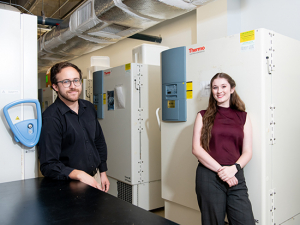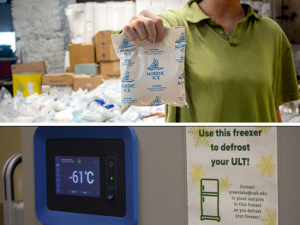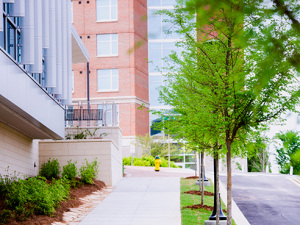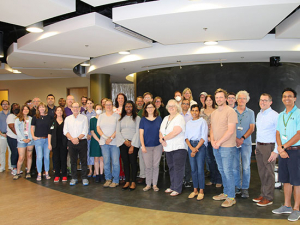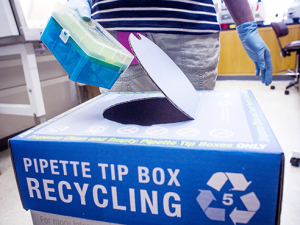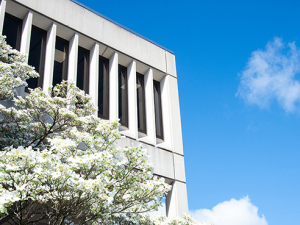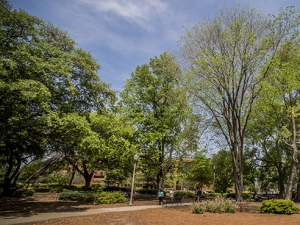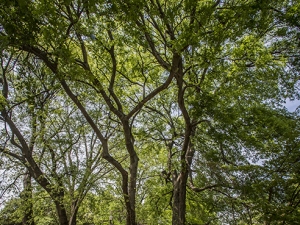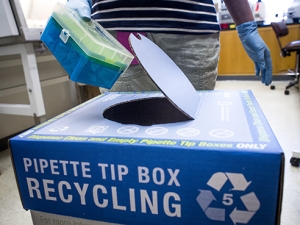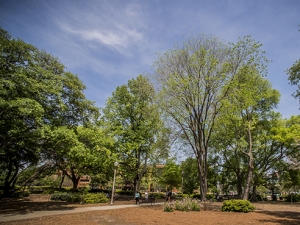
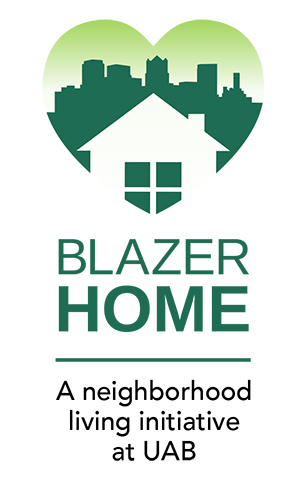 UAB will expand opportunities for homeownership in Five Points South, Glen Iris and North and South Titusville for its employees through Blazer Home, a five-year pilot program that begins this month.
UAB will expand opportunities for homeownership in Five Points South, Glen Iris and North and South Titusville for its employees through Blazer Home, a five-year pilot program that begins this month.
This new initiative, which originated within the UAB Blaze Leadership Program, supports a number of elements of UAB’s Strategic Plan — including investment in university employees, the neighboring community and sustainable practices — by encouraging employees to live where they work.
The Blazer Home program will provide up to 10 grants each fiscal year — for amounts up to $8,000 — that employees may use for expenses such as a down payment or closing costs for new purchases or renovations on an existing home in the designated incentive zones.
“Our proposed investment of $400,000 through 50 UAB homeowners over five years in these neighboring communities is an indication of our commitment to the vitality and safety of our adjacent neighborhoods, our employees and our city,” said Allen Bolton, vice president for Finance and Administration. "We also hope that UAB is just the first among Alabama employers to provide employer-assisted housing benefits."
Who and what qualifies?
All full-time, benefits-eligible employees of UAB, UAB Hospital and UAB Hospital Management LLC are eligible to apply for a Blazer Home grant, said Josephine Banks, executive director for Human Resources. The awards are subject to certain primary stipulations:
- The money must be used to purchase or renovate a primary residence, specifically a single-family home, townhome or condominium.
- The residence must be located in the geographical boundaries of the incentive zones in the Five Points South, Glen Iris and Titusville neighborhoods.
- Employees who receive the conditional five-year grants agree to provide 60 months of continuous employment service to UAB and commit to residing in the home during that time.
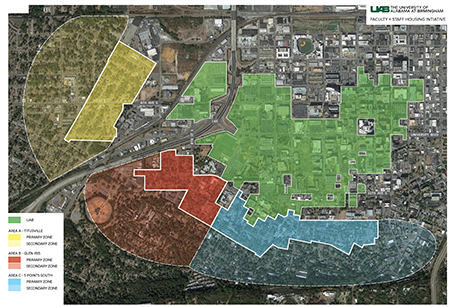 Click to enlarge map of designated incentive zones. At this writing, 825 benefit-eligible employees already live in these areas.
Click to enlarge map of designated incentive zones. At this writing, 825 benefit-eligible employees already live in these areas.
If an application is accepted and approved by the review committee, other financial conditions must be met, Banks said. For example, employees must qualify for a mortgage or loan through an approved lender and first-time homebuyers must complete an online course through UAB’s Learning Management System before funds are released to them.
“We worked with financial specialists in our Employee Assistance Counseling Center and UAB’s Regions Financial Institute to identify a short course that will help first-time homebuyers evaluate their credit and purchasing power and better understand the process of securing a loan and budgeting for upkeep,” Banks said. “It makes sense to use every resource we have to ensure that our employees have the most successful opportunity for homeownership. It’s also good stewardship.”
| We think it is important to encourage residential development that has the potential to bring stability and vitality to the areas around campus. |
Funding for the Blazer Home pilot is being provided by the UAB Educational Foundation.
“We think it is important to encourage residential development that has the potential to bring stability and vitality to the areas around campus,” said its Treasurer Jodie Mote. “It also provides yet another way to strengthen the relationship between the university and the neighboring communities, and it fits nicely with our mission.”
Annual funding for the program is renewed at the beginning of the foundation’s fiscal year, July 1. Employees will be limited to one award per household in an amount up to $8,000 during the life of the program.
Employees can review the full terms and conditions and download an application at uab.edu/blazerhome.
Why do this?
The Blazer Home program was the initiative of the 2016-17 Blaze Leadership Academy class and its members Brian Johnson, Ria Hearld, Mike Gebeke, Kimberly Hazelwood, Kimberly Coppock and Keith Gurley who created the concept paper for a campus-adjacent living initiative. Members of the 2017-18 class — Linda Gunter, Jennifer Ponder and Floyd Josephat — pursued its development and implementation to this point.
| “The vision is that employees of all types will take advantage, especially… faculty and staff that are tired of long, grinding automobile commutes and would prefer to live in the more compact, walkable neighborhoods.” |
Johnson, who said he had previously worked at universities with vibrant, safe, and walkable campus-adjacent neighborhoods, pitched the topic to his Blaze group for its capstone project. “The vision is that employees of all types will take advantage, especially the sizable portion of the faculty and staff that are tired of long, grinding automobile commutes and would prefer to live in the more compact, walkable neighborhoods,” he said.
Hearld, an assistant professor in Health Services Administration, said the project appealed to the Blaze group for a number of reasons, including the links between neighborhood revitalization and campus safety and learning. “More employees living near campus also can foster a feeling of community, encouraging employees to spend more time on campus with colleagues and students and foster the learning community,” she said.
They pitched the idea to senior administration officials who “already were considering similar ideas to jump-start reinvestment in the campus-adjacent neighborhoods so we were able to combine forces and successfully move this initiative forward,” Johnson said.
Although the neighborhood-living initiative is at its core an employee benefit, it also supports a number of other university goals.
“Any employer-assisted housing program would be welcomed, but Blazer Home supports the housing needs and desires of faculty and staff in a manner that directly benefits the community that envelops the campus,” Gunter said. “It is community engagement that is mutually beneficial.”
At this writing, some 825 benefit-eligible employees already live in these incentive zones (along with nearly 1,100 students). Increasing the number of homeowners offers new ways to promote sustainability goals by promoting walkability, decreasing traffic and its related pollution and improving security, livability and investment in neighborhoods.
Recruitment and retention are additional reasons. Employer-assisted housing programs are more common practices to attract and keep talented employees, especially for universities located in high-priced housing markets such as Boston, Chicago, New York and San Diego. Blazer Home can be that incentive in Birmingham.
Ponder, an associate professor of early childhood and elementary education, said living near campus is appealing because of the proximity to work, restaurants, entertainment and the chance to enjoy urban living in a diverse setting. “I did not pursue living downtown when we first relocated to Birmingham from California because it was not presented as a desirable, safe, or popular option for housing and living,” she said.
Her work on the Blazer Home project has dispelled those notions, she said, and now that she is in the market for a new home she hopes to participate in the program she helped create.
Josephat, an associate professor and director of SHP’s Clinical Laboratory Sciences Program, who relocated to UAB from Savannah, Georgia, about three years ago, agreed.
“I like to walk, and the idea of being able to walk to work and to essential businesses is appealing to me,” he said. “This incentive would have been something that I would have pursued when relocating to Birmingham.”
Catalyst for good
| “Encouraging faculty and staff to live near campus can make these neighborhoods more viable for residents who currently live there, support community partners already working to revitalize them and strengthen both campus and city communities.” |
Increasing the number of university homeowners also offers the potential to explore new ways to improve relationships between residents of Five Points South, Glen Iris and Titusville and the campus.
“The response from the community has been overwhelmingly positive,” said James Fowler, director of Planning Design and Construction for UAB Facilities. Fowler met with the neighborhood homeowner groups in March to share the plans and answer questions.
“People have been appreciative and impressed with this plan to invest in the city,” he said.
Fowler said the feedback was favorable from other community partners, including representatives of the City of Birmingham and organizations such as REV Birmingham, which also see this as a way to help bring investment and stability to neighborhoods that have a surplus of rental or abandoned houses.
“Encouraging faculty and staff to live near campus can make these neighborhoods more viable for residents who currently live there, support community partners already working to revitalize them and strengthen both campus and city communities,” Fowler said.


